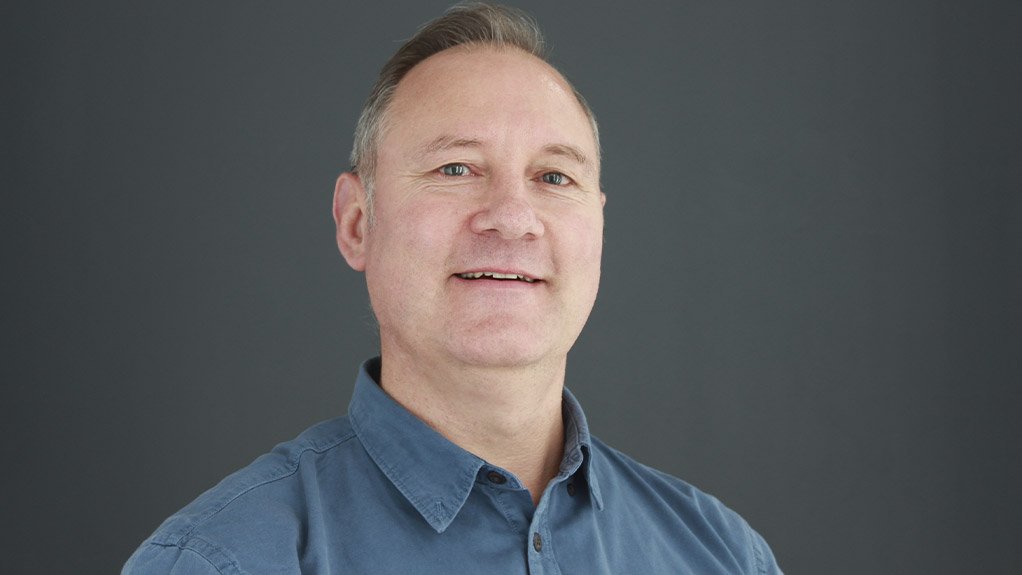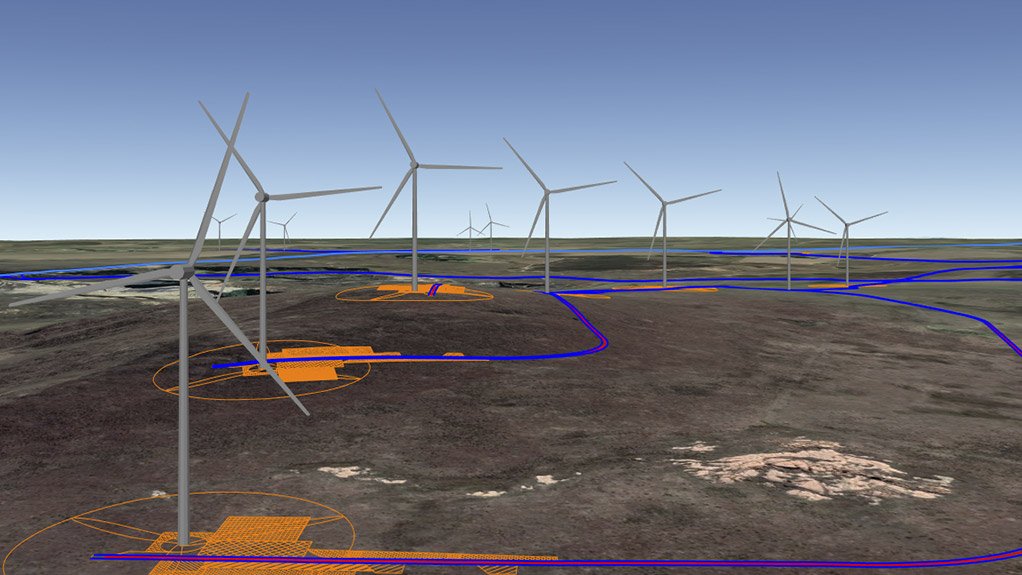JG Afrika helps to fast-track wind energy projects in South Africa



Wimpie Krügel, an Engineer in JG Afrika’s Roads & Highway Division and a Road Safety Auditor
To date, JG Afrika has undertaken between 50 and 60 preliminary internal and access road layouts for over 20 windfarms
This article has been supplied as a media statement and is not written by Creamer Media. It may be available only for a limited time on this website.
JG Afrika, a leading engineering consultancy with a more than 100-year-long track record providing cutting-edge technical services, is closely associated with the Renewable Energy Independent Power Producer Procurement (REIPPP) programme.
The company’s broad spectrum of engineering disciplines has been harnessed by developers of utility-scale renewable energy projects to accelerate the delivery of additional energy to a severely strained national grid. Importantly, this is being achieved while diversifying South Africa’s energy mix to include renewable sources of power to reduce the country’s reliance on fossil-fuel-based electricity.
A case in point is the many preliminary internal and access road layouts that the company has already completed for prominent wind farm developers under the REIPPP programme.
To date, the company has undertaken between 50 and 60 preliminary internal and access road layouts for over 20 wind farms. These projects are predominantly located in the Western Cape, Eastern Cape, Northern Cape, and Mpumalanga. Together, they contribute to the more than 3,000 MW of total installed wind capacity in the country.
The designs are sent to the project developer and various experts to inform the Environmental Impact Assessments for these projects.
Determining the shortest possible route to connect the various wind turbine generators via road in the most economical manner is a complex process.
These renewable energy projects are located on vast tracts of land with huge distances between the many wind turbine generators. One wind farm can consist of up to 60 wind turbine generators that are positioned and built on hardstand areas. These hardstand areas facilitate the temporary laydown area for the tower section and blades as well as the cranes to erect the turbines during the construction phases. They are all connected via an intricate road network consisting of between 20 and 40 roads per wind energy facility.
The largest wind farm for which JG Afrika completed internal and access road layouts was located on about 28,000 ha of mountainous terrain. While planning the layout of the roads, the company’s team of design engineers also had to consider sensitive environmental areas and existing infrastructure. This was in addition to the design parameters of the special heavy vehicles that transport the various wind turbine generator components to the turbine hardstand areas. These trucks and special trailers need to easily navigate gradients and curves, placing substantial restrictions on the horizontal and vertical alignments of the roads.
Wimpie Krügel, an Engineer in JG Afrika’s Roads & Highway Division and a Road Safety Auditor, has played an instrumental role in streamlining the methods deployed by JG Afrika for the preliminary design of internal and access roads for wind farms.
Krügel has participated in all these JG Afrika projects, each of which provides an opportunity to further improve efficiencies to increase turnaround time. This is a significant competitive edge for the firm considering the fast-track nature of these projects.
“We have been refining our processes since we started undertaking preliminary internal and access road layouts for wind farms in 2020. JG Afrika is able to complete the entire process, spanning modelling through to design and output, within a period of between two and three weeks. This is a fraction of the time that it would usually take to complete this work, considering that the actual preliminary design of one road can take up to a day to complete,” Krügel says.
To realise the fastest design that is applicable and up to standard, he improved the interplay between Computer Aided Design (CAD) Software, and data management software.
Krügel first started experimenting with this idea in 2014 when working on the design of the upgrade of 320km of gravel roads to asphalt standard in northern Zambia along the Angola border.
The method was a resounding success. More than 320 design drawings with horizontal and vertical layouts were generated systematically in a few months to meet tight project deadlines by integrating data processing with the CAD software. This system of interplay between the various software packages fast-tracked the road design process and finalised the alignments for submission to the clients and their specialists working on the EIAs, in the renewables field.
The system was then developed further for the design of the unique vertical alignment constraints of roads for wind farms, taking into cognisance factors such as the maximum gradients allowed and minimum curve radii for these roads to accommodate abnormal loads such as the blades and tower sections.
The data, such as the turbine positions and environmentally sensitive areas, that Krügel and his team receive from clients for preliminary internal and access road layouts are usually in Google Earth, KMZ file, format. These are then converted and imported into CAD software, and loaded to build the model.
Thereafter, publicly available digital terrain data are processed to create the digital elevation models for the design process on the CAD design packages.
The roads are then designed using the 3D terrain model. The environmental impact and construction footprint are minimized by determining the shortest routes between the wind turbines and the substation while adhering to the minimum alignment design parameters.
The entire process is then concluded by exporting the design back to KMZ files and sending it to the client and the various specialists working on the EIA.
Once inputs have been received from the various participants, the process is simply repeated.
He says that he is proud of the role that JG Afrika is playing in accelerating the delivery of wind energy in the country.
“Our Roads Department, together with the capabilities that reside within our Traffic and Geotechnical Engineering Departments, are strategically positioned to continue playing our part in delivering wind energy in the country. This renewable energy is forecasted to reach 138TWh by 2040 in the country, creating ample opportunity for market players with the necessary skills and experience, such as JG Afrika, during this period,” Krügel concludes.
Comments
Press Office
Announcements
What's On
Subscribe to improve your user experience...
Option 1 (equivalent of R125 a month):
Receive a weekly copy of Creamer Media's Engineering News & Mining Weekly magazine
(print copy for those in South Africa and e-magazine for those outside of South Africa)
Receive daily email newsletters
Access to full search results
Access archive of magazine back copies
Access to Projects in Progress
Access to ONE Research Report of your choice in PDF format
Option 2 (equivalent of R375 a month):
All benefits from Option 1
PLUS
Access to Creamer Media's Research Channel Africa for ALL Research Reports, in PDF format, on various industrial and mining sectors
including Electricity; Water; Energy Transition; Hydrogen; Roads, Rail and Ports; Coal; Gold; Platinum; Battery Metals; etc.
Already a subscriber?
Forgotten your password?
Receive weekly copy of Creamer Media's Engineering News & Mining Weekly magazine (print copy for those in South Africa and e-magazine for those outside of South Africa)
➕
Recieve daily email newsletters
➕
Access to full search results
➕
Access archive of magazine back copies
➕
Access to Projects in Progress
➕
Access to ONE Research Report of your choice in PDF format
RESEARCH CHANNEL AFRICA
R4500 (equivalent of R375 a month)
SUBSCRIBEAll benefits from Option 1
➕
Access to Creamer Media's Research Channel Africa for ALL Research Reports on various industrial and mining sectors, in PDF format, including on:
Electricity
➕
Water
➕
Energy Transition
➕
Hydrogen
➕
Roads, Rail and Ports
➕
Coal
➕
Gold
➕
Platinum
➕
Battery Metals
➕
etc.
Receive all benefits from Option 1 or Option 2 delivered to numerous people at your company
➕
Multiple User names and Passwords for simultaneous log-ins
➕
Intranet integration access to all in your organisation



















